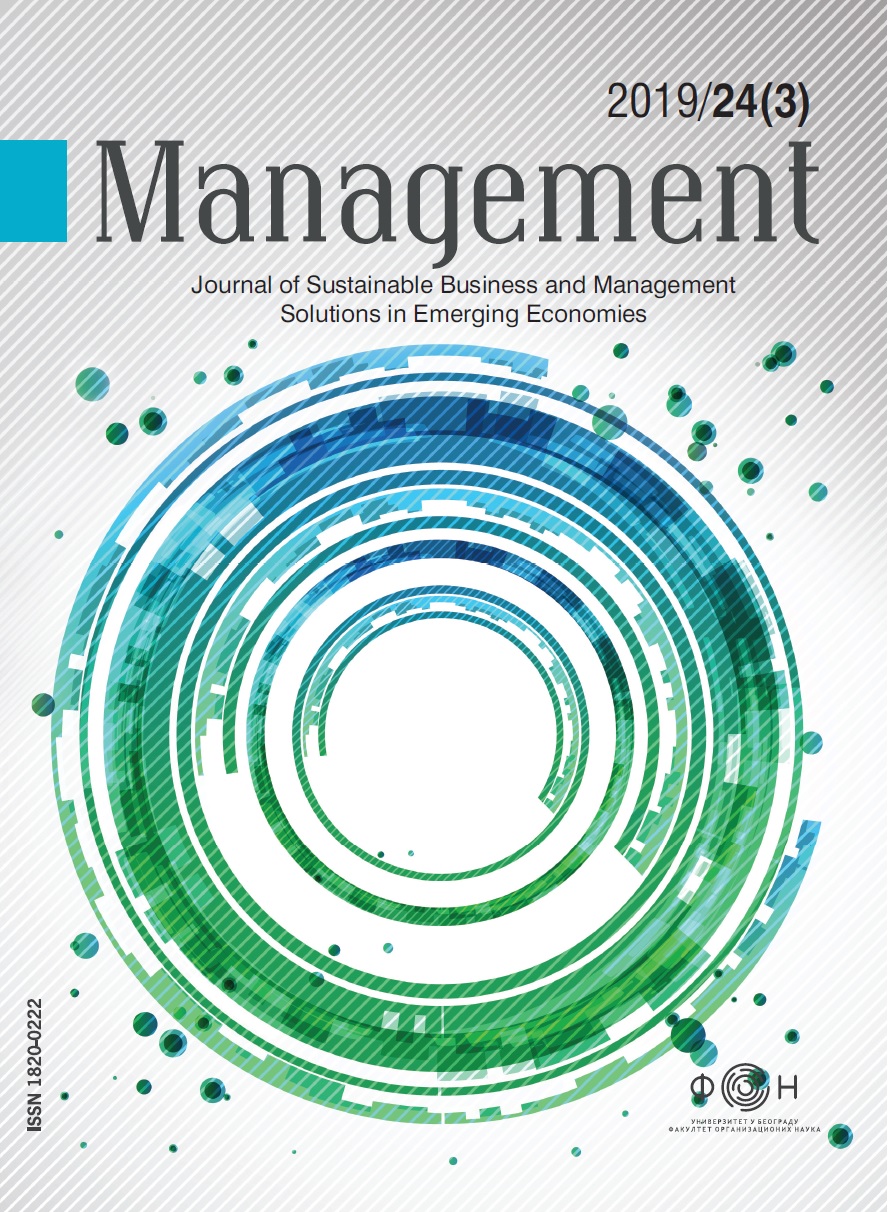A fuzzy model for organization structure design with human resource allocation
A fuzzy model for organization structure design with human resource allocation
Author(s): Dragan Pamučar, Nikola Knežević, Dragana Macura, Boban ĐorovićSubject(s): Business Economy / Management, Human Resources in Economy
Published by: Fakultet organizacionih nauka Univerziteta u Beogradu (FON)
Keywords: organizational structure design;resource allocation; simulated annealing; neuro fuzzy, fuzzy logic
Summary/Abstract: Research Question: The paper explores the problem of defining the number of required employees and their skills, as well as optimizing the work time. Motivation: Motivation for this paper arises from the fact that an organizational structure of business system has to be conceived and proportioned so as to justify the main company jobs and goals. Almost every job set for the management must be performed properly and reliably in changeable environmental conditions. In order to maintain the efficiency of complex business systems with dynamic and stochastic changeable and unchangeable variables, it is essential that the organizational structure be flexible and constantly adjusted. Idea: The idea of the paper was to develop a model for human resource allocation (HRA) in fuzzy environment. Data: The model is tested in realistic industrial environment - the example of the logistics administrative bodies in the Petroleum Industry of Serbia. Tools: To solve the problem, the following approaches are used: Fuzzy logic, Neural network and Simulated annealing. The model for HRA is based on an adaptive neuro-fuzzy inference system (ANFIS) and fuzzy mathematical model (FMM) for treating uncertainty. ANFIS-FMM model enables the human resource strategy development based on the optimisation of the employees’ work time. In this ANFIS-FMM model the input variables are described using fuzzy sets represented by Gaussian functions. Using expert reasoning, an unique knowledge base is formed which enables the human resource strategy development based on the optimisation of the employees’ work time. Findings: Based on authors’ knowledge there is a lack of the fuzzy logic applications, adaptive neuro-fuzzy models, linear and dynamic programming, as well as heuristic and metaheuristic models related to HRA. In most of the papers, the classical methods of strategic management have been used for HRA. Contribution: In this paper the model for HRA is developed based on adaptive neuro-fuzzy technique application and FMM. The model has four main advantages over other HRA methods: the system possesses adaptability, the model is efficient in conditions of uncertainty, the neuro-fuzzy based HRA model allows dynamic decision making in HRA management through the implementation of a computer-based system, it can be IT-supported tool.
Journal: Management: Journal of Sustainable Business and Management Solutions in Emerging Economies
- Issue Year: 24/2019
- Issue No: 3
- Page Range: 81-96
- Page Count: 15
- Language: English

